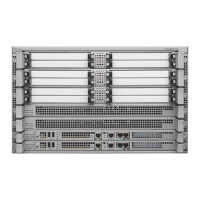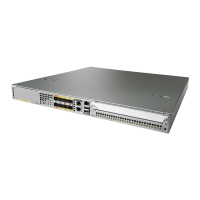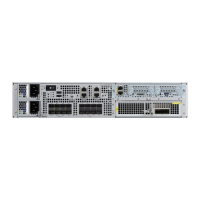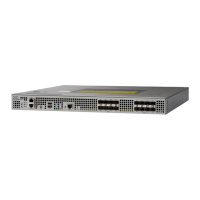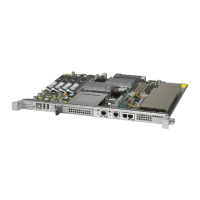6-3
Cisco ASR 1000 Series Aggregation Services Routers SIP and SPA Software Configuration Guide
OL-14127-08
Chapter 6 Overview of the ATM SPAs
Supported Features
Note The ATM SPA is functionally similar to other ATM port adapters on the Cisco ASR 1000
Series Routers, but because it is a different card type, the configuration for the slot is lost
when you replace an existing ATM port adapter with an ATM SPA in a SIP.
• RFC 2684: Multiprotocol Encapsulation over ATM Adaptation Layer 5 (formerly RFC 1483).
• Supports permanent virtual circuits (PVCs)
• IEEE 802.1QinQ
• ATM adaptation layer 5 (AAL5) for data traffic.
• Uses small form-factor pluggable (SFP) optical transceivers, allowing the same ATM SPA hardware
to support multimode (MM), single-mode intermediate (SMI), or single-mode long (SML) reach,
depending on the capabilities of the SPA.
• ATM section, line, and path alarm indication signal (AIS) cells, including support for F4 and F5
flows, loopback, and remote defect indication (RDI).
• Operation, Administration, and Maintenance (OAM) cells.
• Online insertion and removal (OIR) of individual ATM SPAs from the SIP, as well as OIR of the
SIPs with ATM SPAs installed.
SONET/SDH Error, Alarm, and Performance Monitoring
• Fiber removed and reinserted
• Signal failure bit error rate (SF-BER)
• Signal degrade bit error rate (SD-BER)
• Signal label payload construction (C2)
• Path trace byte (J1)
• Section Diagnostics:
–
Loss of signal (SLOS)
–
Loss of frame (SLOF)
–
Error counts for B1
–
Threshold crossing alarms (TCA) for B1 (B1-TCA)
• Line Diagnostics:
–
Line alarm indication signal (LAIS)
–
Line remote defect indication (LRDI)
–
Line remote error indication (LREI)
–
Error counts for B2
–
Threshold crossing alarms for B2 (B2-TCA)
• Path Diagnostics:
–
Path alarm indication signal (PAIS)
–
Path remote defect indication (PRDI)
–
Path remote error indication (PREI)

